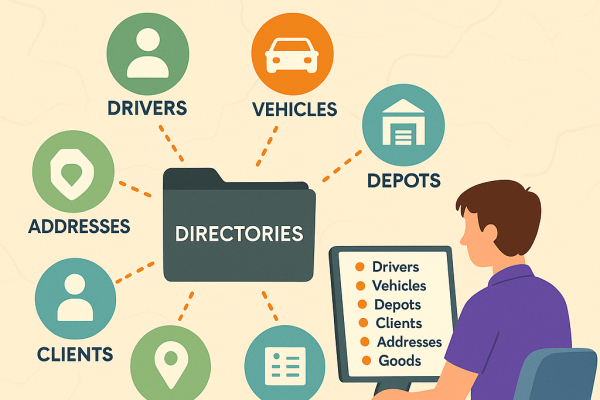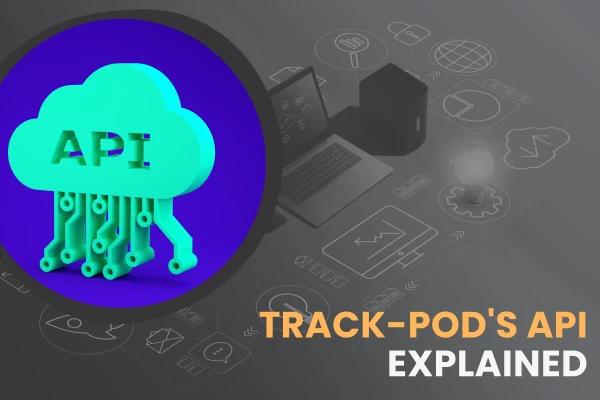Dispatch Delivery Driver - Responsibilities and More

by
Alisa Cvilij
June 27, 2024
With the current boom in the transportation industry, dispatch delivery drivers find that their jobs entail much more responsibility than, say, ten years ago. The global shortage of experienced drivers and increasing demands for swift deliveries place pressure on drivers everywhere.
Dispatch delivery drivers may work for themselves or for a large organization. They follow optimized delivery routes provided by dispatchers. They drive responsibly and adhere to strict delivery timeframes to keep the customers happy.
Dispatch drivers are familiar with road safety regulations and compliance with drivers’ hours and licensing requirements.
Dispatch drivers ensure that documentation is in order. This includes fuel and maintenance expenses, tracking logs, customer invoices, and proof of delivery (POD).
- Regular vehicle inspection is an important part of a dispatch driver’s day, as they cannot afford breakdowns. They have sound knowledge of their vehicles and take responsibility for their maintenance.
We discuss the differences between dispatchers, dispatch delivery drivers, and regular delivery drivers.
Remember that each job is different, so these guidelines are not cast in stone. In some companies, the duties of these positions may overlap. What the various driving/dispatching positions entail sometimes depends on staff availability and the type of cargo.
The difference between dispatch drivers and other delivery drivers
The difference between truck drivers and dispatch delivery drivers lies in the job's responsibilities.
Both jobs require driving skills and a basic knowledge of the rules of the road. Both require the necessary license for the type of vehicle they drive. And both require good people skills when dealing with customers and colleagues.
- Delivery drivers generally work for smaller businesses. They plan their routes based on their knowledge of the area. They may use a GPS but don’t need to be familiar with the advanced dispatch software used in larger corporations.
- Dispatch drivers, on the other hand, work for large companies. These can be logistics companies or large manufacturing or distribution companies with their own logistics departments. They usually receive delivery schedules from the dispatcher. However, some organizations may be required to schedule their own work. This requires good computer literacy skills. They also interact with their dispatcher when something unforeseen goes wrong and may be able to update delivery statuses and times themselves.
Dispatch delivery drivers are often assigned urgent and same-day deliveries. Because they are under pressure to deliver on time, they need good organizational and time-management skills.
Dispatch drivers also take care of their vehicles themselves. They do routine inspections and schedule vehicles for maintenance and repairs.
Differences between dispatchers and dispatch delivery drivers
The fundamental difference between a dispatcher and a dispatch delivery driver is that the driver needs a commercial driver’s license (CDL) and driving experience.
Both dispatchers and dispatch drivers need people skills when dealing with customers. Both need proficiency in handling documentation. Dispatchers handle the route planning process and need good computer skills. Dispatch drivers may not be involved in the planning process to a large extent and may get by with basic computer literacy.
Responsibilities of a dispatch delivery driver
Dispatch delivery drivers work in large logistics environments. They work in coordination with dispatchers, taking instructions in the form of delivery schedules, planning their routes accordingly, and meeting their deadlines. Here are some of their responsibilities:
Delivery schedules
Dispatch drivers are given a delivery schedule for each trip that they do. They follow the direction of the route plan and deliver the items within the expected time frame. If there are any delays on the road, the driver will contact the dispatcher to discuss a possible route diversion. If this pushes the time out, the driver or the dispatcher will communicate a change in delivery times to customers waiting for their deliveries.
Rules and regulations
Dispatch delivery drivers are expected to know their local road usage laws. If their jobs entail deliveries to sea ports or across border posts,, they will also know those regulations. They will also have a working knowledge of the documentation required for sea freight and cross-border permits.
Vehicle maintenance
Delivery drivers are expected to perform a routine vehicle inspection each morning or before leaving the depot. This is important. Something simple, such as a flat tire, can waste an hour on the road and impact all delivery times. Bad brakes can cause an accident on the road and impact many lives. Logistics companies usually issue a checklist that delivery drivers adhere to.
Documentation
Drivers are responsible for a lot of paperwork:
- They check the delivery schedule as they go, logging times and mileage.
- Record any incorrect deliveries, short deliveries, or returns.
- Record reasons for incomplete deliveries and returns with customer remarks.
- Produce invoices or delivery notes and get signed proof of delivery.
- Make sure they have the necessary documents for crossing borders.
- Make sure they have the loading documents for sea cargo.
This documentation can take up a lot of the dispatch driver’s time, and much of it can be automated with the use of mobile apps that scan barcodes and update software with the use of API tools.
Dispatch delivery drivers need to drive responsibly and handle emergencies effectively. They deal with customers regularly and need good communication skills.

About The Author
Alisa Cvilij
Content Marketer at Track-POD. Passionate about building meaningful and helpful content for the readers.






